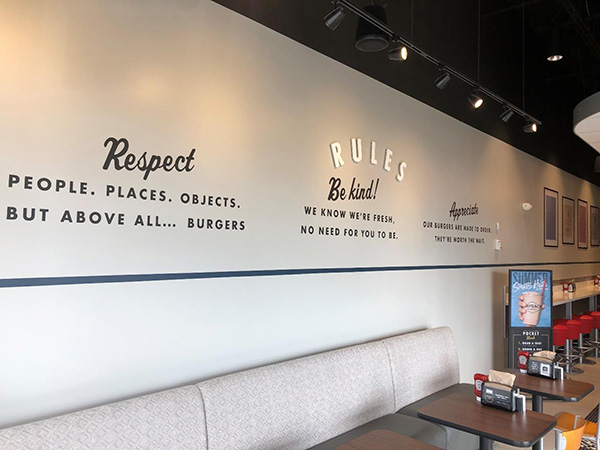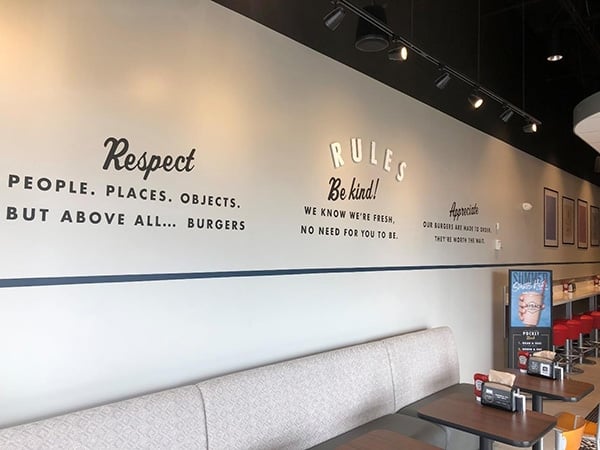 Regardless of how unique a restaurant’s value proposition is, how great its menu may be, and how standardized its execution is, everyone makes mistakes. In some cases, a restaurant (or its employees) might not even make a mistake, and yet a customer with an ax to grind, for whatever reason, may decide to take out his or her bad day on the restaurant. It’s going to happen.
Regardless of how unique a restaurant’s value proposition is, how great its menu may be, and how standardized its execution is, everyone makes mistakes. In some cases, a restaurant (or its employees) might not even make a mistake, and yet a customer with an ax to grind, for whatever reason, may decide to take out his or her bad day on the restaurant. It’s going to happen.
Maybe you are reading this because you’ve opened a successful restaurant, such as a burger business that stands apart from the competition. You spent months planning and tweaking before you launched, put your plan into action, and your business is going strong. Suddenly you’ve had a few customer complaints and now you’re looking for best practices from industry leaders on how to handle this common, yet frustrating, obstacle.
Or perhaps you are still in the planning stage and trying to prepare in advance for contingencies such as complaints. Either way, it’s important to keep your cool in the face of restaurant customer complaints.
The Age of Complaint is Upon Us
Today, customers have more ways to complain, and that’s both good and bad. The first and perhaps oldest method is when the customer makes a complaint in person at the restaurant, to management or staff.
Then, of course, is the online avenue, which is good in that it enables customers who may be shy about in-person confrontation to voice constructive feedback from afar, after the dining experience (or during if they are using a smartphone).
The online option, however, also has its negative aspects, especially for the business on the receiving end of a less than optimal review, since customers can remain anonymous and may take their complaints over the top. Such gripes often result in lower scores for the restaurant on sites such as Yelp.com, including a written description of the disappointing experience, or, worse, can sometimes spread quickly across the internet, “going viral,” and cause significant damage to a restaurant’s business.
Listen to the Customer
No matter how a customer chooses to voice their complaints, in person or online, start by listening fully and trying to understand why they were unhappy with their experience at your establishment. If you don’t listen — truly listen — to the customer, you learn nothing about how to improve. A restaurant’s success is based largely on service and hospitality, which means the customer experience is a major factor in establishing a thriving business.
Don’t first assume the customer is unreasonable or overly demanding. Be sure to understand the issue, be it service that took too long, something missing from the order, an over- or under-cooked item, loud music, a dirty table, or anything else.
Be sure to thank the customer for bringing the issue to your attention, and try to take immediate steps to correct the situation. It shows the customer you are sincere, and are truly making an effort to provide them with a top-notch guest experience. A complaint gives you the opportunity to learn where your weaknesses are and work to improve your business.
Demonstrate That You Understand
Make eye contact with a customer who is complaining. If he or she is upset, and speaking or behaving with any degree of anger, remain calm. Though it may be reflexive human nature to respond in kind, or become defensive, nothing positive ever comes of doing so. Continue listening to the customer and allow him or her to fully describe the details that led to the complaint and why they are unhappy.
If you are reading a bad review online, though it’s important to address it promptly, it is beneficial to pause before responding or reaching out to the customer who posted it. Take a breath. Because the customer isn’t standing in front of you, you don’t have to reply at that moment. Think carefully about the response, but make sure you do respond promptly.
Whether in person or online, remember the old maxim, “The customer is always right.” This means empathizing with the guest and believing that what they feel and say is real. Though the complaint may seem unreasonable or overly reactionary to you, remember that may be because you’re the one presenting the hospitality that is being called into question. Don’t take the complaint personally; put yourself in his or her shoes. Try not to become defensive.
Keep it Real — and Cool
We have all witnessed overly picky customers complain about something that isn’t the restaurant’s fault, but that should not be relevant when fielding the complaint. Apologize for the stated problem and take responsibility. Pushing back and refusing to validate the customer’s feelings only worsens the restaurant’s brand and escalates the poor experience.
If the customer’s tone of voice is angry or loud, reply in a softer, slower tone.
It is very important that empathy be authentic. Don’t merely patronize the customer, which only makes it worse, as the customer now feels you don’t consider the complaint reasonable. Addressing the customer by his or her name often during the conversation helps demonstrate sincerity.
Focus on the customer. Don’t interrupt to speak to staff about other matters or answer the phone. Be in the moment.
Offer Something
Offering something to help make up for the situation or issue at hand may be as simple as showing empathy and expressing that you understand and apologize. Depending on the severity of the circumstances, however, you may consider also offering a gift card (to make up for bad food or service), which helps bring them back again, or a discount (partial or full) on the unsatisfactory meal, if that’s the basis of the complaint.
If the complaint comes mid-meal, perhaps a replacement dish makes sense. Sometimes a free dessert cures all ills.
Be the Same Online
All of these considerations apply to online reviews and comments as much as they do to in-person interactions. The difference is that while an in-person complaint may not be heard by anyone other than the manager/server and customer (or at most other patrons in earshot) anyone in the world can read a negative review.
So, post a public response to the poor review, with the same tactful approach as in person. Point out that you have read the comment and understand the customer’s feedback. Apologize for the bad experience and state your desire to do better.
Resist the urge to make excuses about why a meal or service was unsatisfactory. Don’t blame it on an employee not showing up for a shift or for that you were busier than usual.
Likewise, positive reviews also deserve a timely response. If a satisfied guest takes the time to give your restaurant a four- or five-star review, make sure to respond by thanking them for both their patronage and feedback.
And since you are responding to a public comment that can be seen by everyone, make sure your public reply tells the customer that you will send them a private message — if that happens to be possible on the particular forum. If that’s not an option, ask, in the public message, if the customer will email or call you, and give them the appropriate contact information. This not only shows love to the customer but also demonstrates to anyone else reading the comments that you care about pleasing guests and do not ignore their complaints.
Following Up
If the complaint in question was particularly nasty, angry, and unreasonable, chances are that the person who made the complaint will have already cooled down and won’t take you up on your offer. A more level-headed, honest complainant may be likely to reach out, giving you another opportunity and touchpoint for pleasing them.
If an angry customer continues to express further discontent with additional angry replies after you’ve offered a sincere response and offer to make amends, stop replying and let your public conciliatory reply stand to show other potential customers you took the high road.
Learn From It
One of the best ways to handle restaurant customer complaints is to learn from them. Most complaints are valid and bring weaknesses and areas for improvement to your attention. Don’t take complaints personally, but take them to heart for your bottom line.
If you are considering opening a restaurant or researching different franchise options, Wayback Burgers is a growing, fast-casual, burger franchise with a small footprint and a big upside. In fact, one of the benefits of becoming a franchise owner is the operational support and expertise of a team with almost two decades of knowledge and experience with handling situations like customer complaints and other obstacles you may never have even considered.
About Wayback Burgers
Wayback Burgers offers qualified candidates the opportunity to open and operate a business in the highly sought-after fast-casual sector with a small footprint and a big upside.
The support and background of the team at Wayback Burgers, gives franchisees the valuable guidance they need when dealing with unforeseen hurdles such as customer complaints.
Wayback offers initial training and ongoing support for all its franchisees and works diligently on finding innovative ways to offer franchisees the opportunity to increase revenue while adding value to the customer experience.

